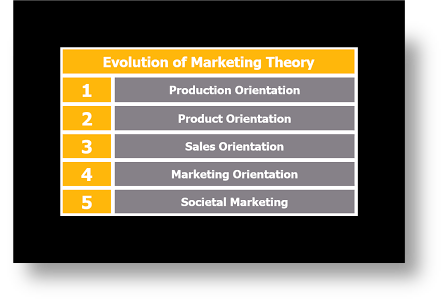The Eras That Shaped Evolution of Marketing
Introduction
The Evolution of Marketing has always been an essential aspect of commerce, evolving in tandem with society’s changing needs, technologies, and consumer behaviors. From the humble beginnings of the Simple Trade Era in the 1400s to the dynamic landscape of social media marketing today, the Evolution of Marketing reflects the broader shifts in our economy and culture. Each era brought forth innovative strategies and practices that not only transformed how businesses engage with customers but also reshaped the very definition of marketing itself. In this blog, we will explore the distinct stages of marketing evolution, highlighting the key characteristics and milestones that have paved the way for the modern marketing strategies we see today. Join us as we take a journey through time, examining how marketing has adapted and thrived in an ever-changing world.
The Age of the Simple Trade (From 1400s to 1700s):
You might be perplexed as to what kind of marketing was taking place thus far ago, but there are several documented examples of marketing being utilised to promote company. One of the first was the notion of market towns, the modern-day counterpart of farmer’s markets! At the time, the industrialisation had still not commenced, and therefore only handcrafted goods were marketed and traded. People would manufacture food and other commodities for their own households, then sell (or exchange) everything they didn’t consume to make a profit. The invention of moveable type — one of the first types of a printing machine — around 1440 marked the beginning of mass printing. This is considered revolutionary because that was the first moment human consciousness was mass manufactured.
The Industrial Revolution (From the 1800s to 1920s)
This era arose when the emphasis on mass manufacturing grew increasingly important, resulting in the first industrialization. To keep up with output, machinery became trendy, and factories employing hundreds of employees were erected.
Companies began to embrace the concept of mass manufacturing in order to decrease costs and increase sales. Simply put, the only priority was to sell, sell, sell! The production line pioneered by Ford Motor Company characterised this age, as other firms followed immediately suit and productivity remained their exclusive focus. They also concentrated their brand awareness on how to outperform competition, with both the Coca-Cola vs. Pepsi competition as one of the most famous examples in influencing the evolution of marketing.
Unlike now, businesses thought that a price reduction was far more essential than quality. This is a technique that most businesses avoid nowadays, owing to customer-centric ideas such as the online marketing strategy.

The Sales Era (From 1920s to 1940s)
As more companies remained in rivalry with one another, their sales methods got increasingly aggressive. Because mass-produced items were now the bulk of what was available on the market, firms were compelled to focus solely on sales volume, with little regard for quality or consumer pleasure.
Advertising across numerous mediums such as print, radio, and television became highly popular. Salespeople were employed to walk door to door, selling items in people’s living rooms. It seemed like wherever you looked back then, you were being offered something you (likely) didn’t need. These selling techniques were all deemed to be part of ‘marketing,’ and they now play a major role in the do’s and don’ts of current marketing endeavours.
Era of the Marketing Department: (From1940s to 1960s)
In the 1940s, industries began to see that consumers were being left extremely dissatisfied and that focusing solely on the requirements of their own firm was not sustainable. The marketing department was formed by combining the advertising and sales divisions. Interestingly, marketing was utilised to convince individuals of the worth of their products and why they needed them, rather than allowing them to make their own decisions.
Marketing Company Era (From 1960s to 1990s)
Marketing divisions were now in charge of driving the company’s initiatives and strategy across all departments. The primary goal of the firm is now to provide a positive client experience.
During the 1984 Super Bowl, the first advertisement, featuring Apple’s Macintosh computer, was shown, explaining why people needed this new technology rather than spouting facts to persuade them to buy. The iconic Super Bowl advertisements began right then and there, and they continue to this day.
Relationship Marketing Era (From 1990s to 2010s)
Eventually, most businesses’ goal evolved to build long-term relationships with their customers. Throughout that period, the well-known phrase “the consumer is king” became widespread, emphasising the company’s shift in priority.
Yahoo as well as other internet sites grew popular as customers turned to the web for explanations. Furthermore, the first advertising campaign was established using online ads. Excedrin, some over migraine medication, provided free supplies to the more than 30,000 online consumers who joined up.
The Age of Social and Mobile Marketing (2010 to the present)
By this stage, the tables have shifted, and customers are now in control of how they get advertisements and other promotional messages. Ad-free streaming sites such as Netflix have gained off, rendering advertisements useless. Similarly, owing to social media, email newsletter lists, and blog postings, customers only follow the firms they would really like to hear from. In 2017, internet advertising was a $24 billion dollar business, with social networking and blogging being the most popular marketing channels!
As can be seen, the evolution of marketing has evolved dramatically over the last few decades. Unlike our colleagues from the 1800s, today’s marketing business is totally reliant on the customer, with a strong emphasis on quality rather than quantity.
Marketing in the Twenty-First Century
It’s easy to become caught in old habits, but with our Marketing Technology guide, you can bring your marketing efforts up to date. This free resource will teach you the fundamentals of lead generation and providing relevant information to your potential consumers.
Conclusion
The Evolution of Marketing proves how human beings are capable of adjusting and outsmarting the environment. From the barter system of the Simple Trade Era to the personalized experiences crafted in the Age of Social and Mobile Marketing, each stage has played a crucial role in shaping today’s marketing landscape. As we retrospect these major eras, it was more than evident that the Evolution of Marketing is just a topic of history, it’s a recognition of the lessons learned and application of them to future strategies. Today’s marketers must continue to embrace change, leveraging technology and consumer insights to meet the demands of a more informed and empowered audience. The turn will affect not only us but also the marketing as we have always experienced it. We will be accompanied by creativity, innovation, and the strong pursuit of creating personal bonds.
FAQ’s
1. What is the Evolution of Marketing?
Answer: The Evolution of Marketing refers to the changes and developments in marketing practices over time. It encompasses various stages, from the Simple Trade Era of the 1400s to the current Age of Social and Mobile Marketing, reflecting shifts in consumer behavior, technology, and business strategies.
2. What were the key characteristics of the Simple Trade Era?
Answer: In the Simple Trade Era (1400s to 1700s), marketing was based on bartering and market towns, where handcrafted goods were sold or exchanged. People produced goods for personal use and traded surplus items, marking the beginning of structured commerce.
3. How did the Industrial Revolution influence marketing?
Answer: The Industrial Revolution (1800s to 1920s) led to mass production and the establishment of factories. Marketing during this era focused on reducing prices and increasing sales volume, with businesses prioritizing efficiency over quality, as seen in the competition between brands like Coca-Cola and Pepsi.
4. What are the main features of the Sales Era?
Answer: The Sales Era (1920s to 1940s) was characterized by aggressive sales techniques and a focus on volume sales. Companies utilized various advertising mediums, such as print, radio, and television, often employing door-to-door salespeople to push products, regardless of consumer needs.
5. How did relationship marketing change business practices?
Answer: Relationship Marketing (1990s to 2010s) shifted the focus from short-term sales to building long-term relationships with customers. Businesses started prioritizing customer loyalty and engagement, emphasizing that “the consumer is king,” and leveraging digital platforms for consistent communication.
6. What role does social media play in modern marketing?
Answer: In the Age of Social and Mobile Marketing (2010 to present), social media has become a crucial tool for brands to engage directly with consumers. Customers now control how they receive advertising, leading businesses to create more personalized and relevant content to foster meaningful connections.
7. Why is understanding the Evolution of Marketing important?
Answer: Understanding the Evolution of Marketing helps businesses learn from past practices and adapt to changing consumer behaviors and technologies. By recognizing historical trends and strategies, marketers can better shape their future initiatives to connect effectively with their audience.

